Mini Apple Strudel with Phyllo Pastry (Apfelstrudel)
I first made apple strudel (also called Apfelstrudel) when I was a teen. It was one of my grandpa's favorite desserts, and I wanted to surprise him by making it from scratch. Although my technique has definitely improved over the years, my filling recipe has remained unchanged. These mini apple strudels are a variation on my original full-sized version: wrapped in buttery, flaky phyllo and perfect for entertaining.
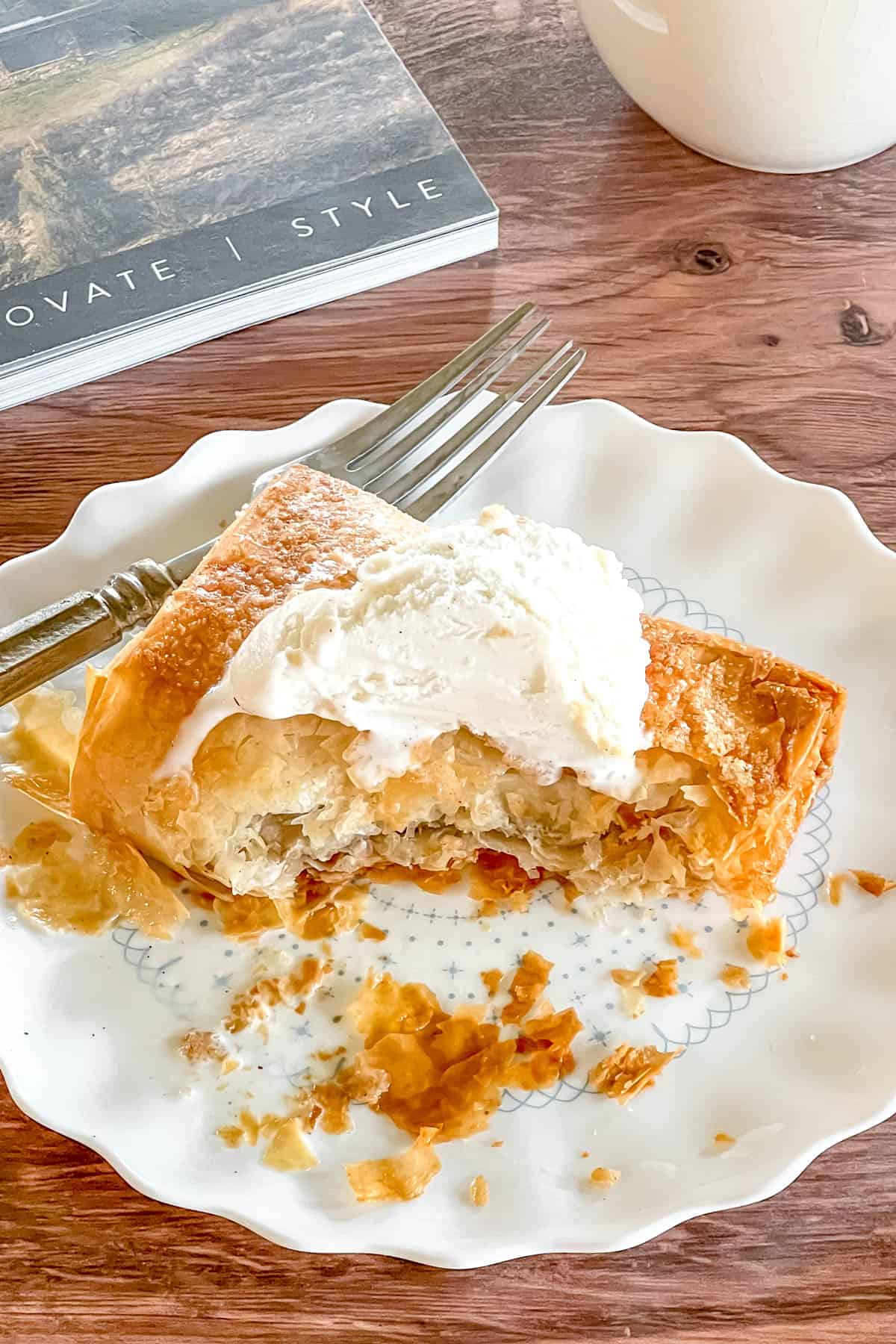
Why my mini apple strudels are my most requested dessert
Instead of apple pie, I serve these apfelstrudels every year at our large Thanksgiving gathering. They have become so popular that the holiday would not be same in their absence. Here's why they are my most popular dessert among family and friends:
It's a tried and true recipe
As the saying goes, I could make the recipe with my eyes closed. It's featured in my first cookbook, 175 Best Mini Pies, so it has been tested and approved. As I mentioned, I've made it for Thanksgiving for years, and I recently served it at a charity event, for which I was asked to make assorted desserts for 500. Guess which dessert I ran out of first??
Good things come in small packages
I love a mini pie. You get your own personal pie (and get to eat it all!) They are easier to serve and they are easier to transport. Plus, you can hold them in your hands and eat them standing up -- no fork required! Mini pies also add a layer of variation to a holiday dessert spread, which usually consists of an array of standard round pies.
Mini apple strudels are a feast for all five senses!
- Sight: Shiny golden brown exteriors with visible layers of flaky pastry.
- Taste: Buttery cinnamon sugar flavors on the outside and tart, juicy apple filling on the inside.
- Touch: So easy to pick up and hold in your hand!
- Smell: The aroma of spiced apple pie and baking pastries fills the kitchen as the strudels bake.
- Sound: That crunch of crisp pastry layers when you dig into your first bite!
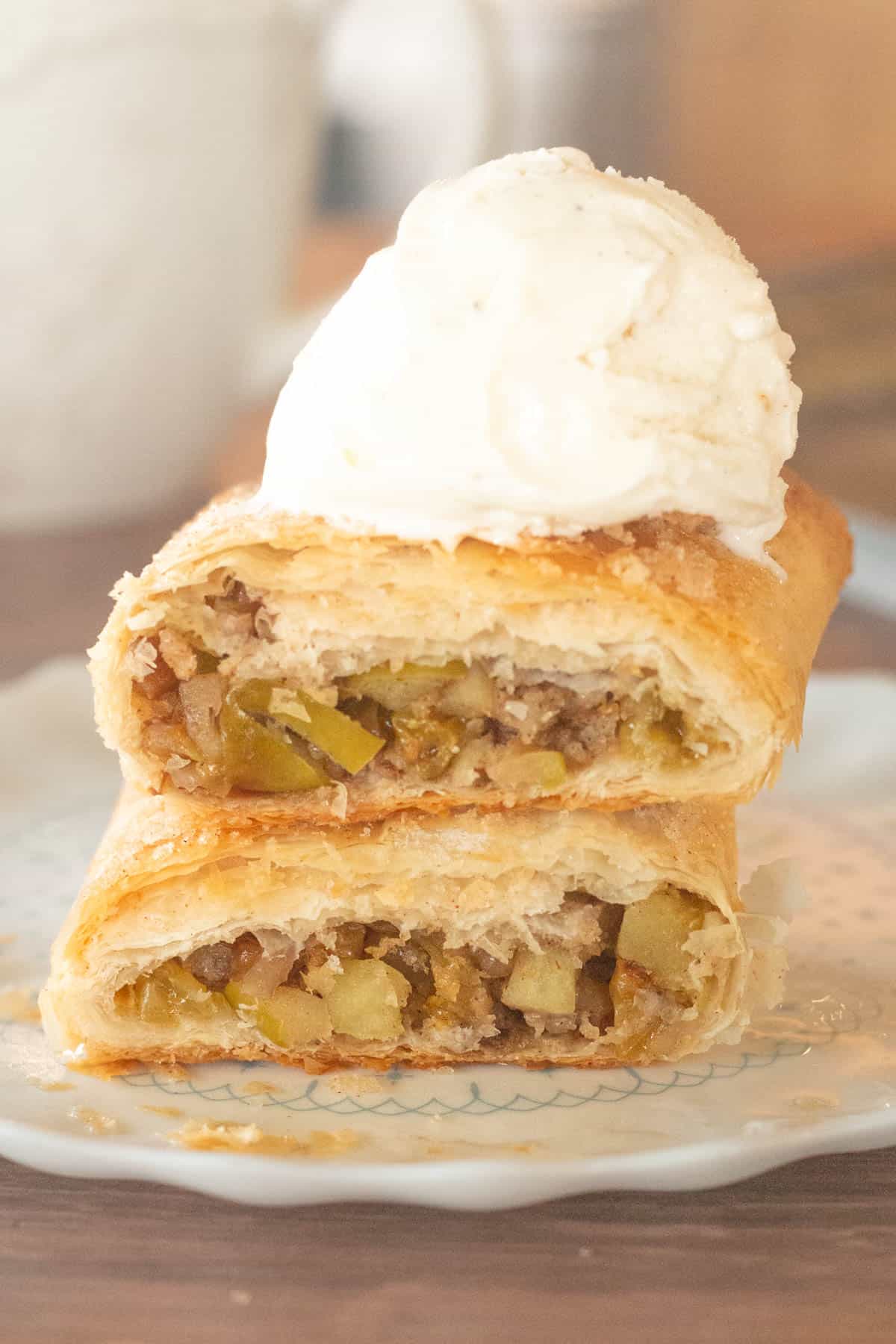
Video tutorial: Watch my mini apple strudel (or apfelstrudel) take shape!
Ingredients and special equipment
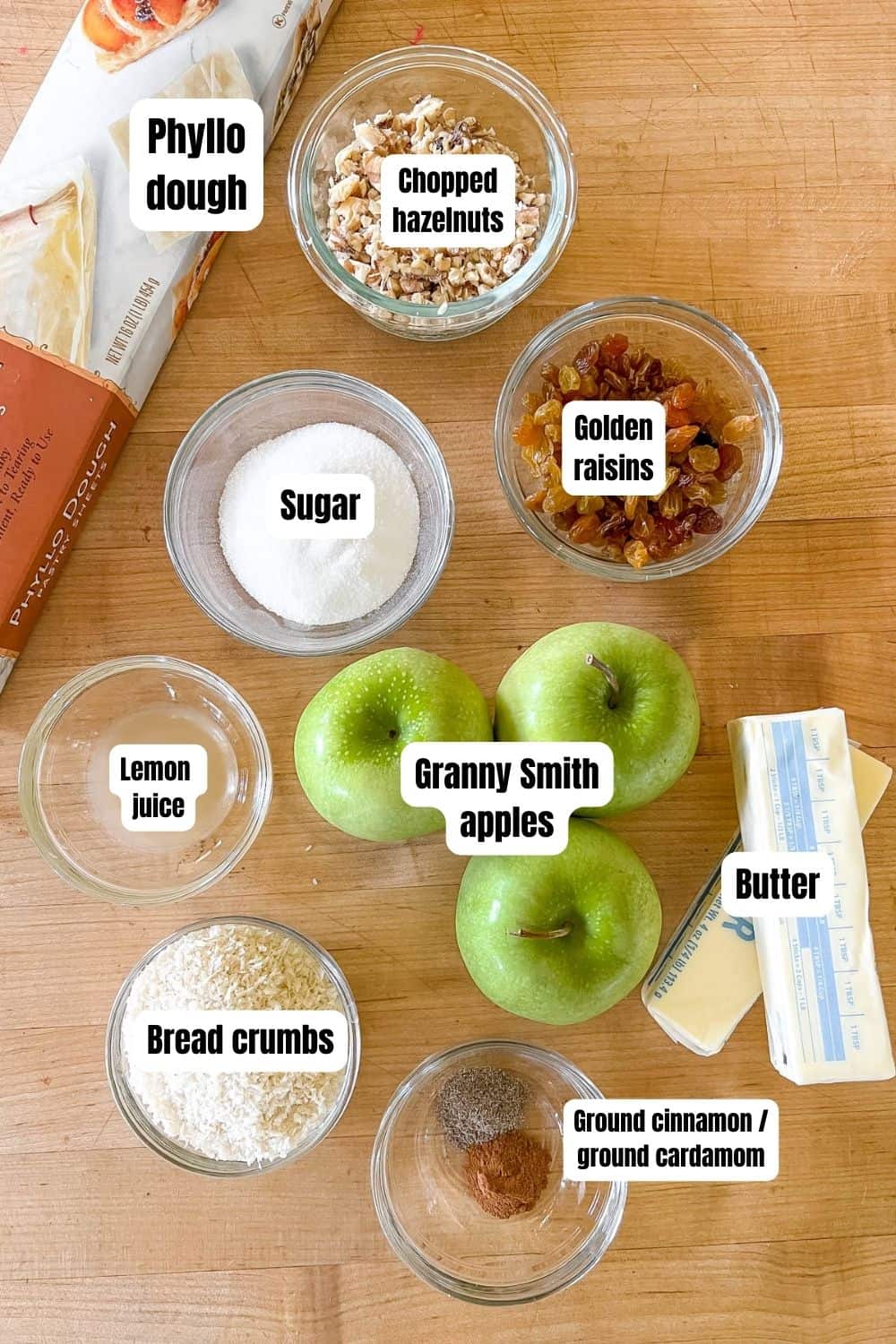
Ingredient notes
Granny smith apples
I've found that green Granny Smith apples work well with this recipe, as their tart flavor contrasts with the sweet cinnamon sugar and the buttery phyllo. You can use any tart apple varietal as a replacement.
Note: The directions for this recipe don't require peeled apples, as I don't find it necessary. But feel free to peel the apples if you prefer--it won't affect the recipe.
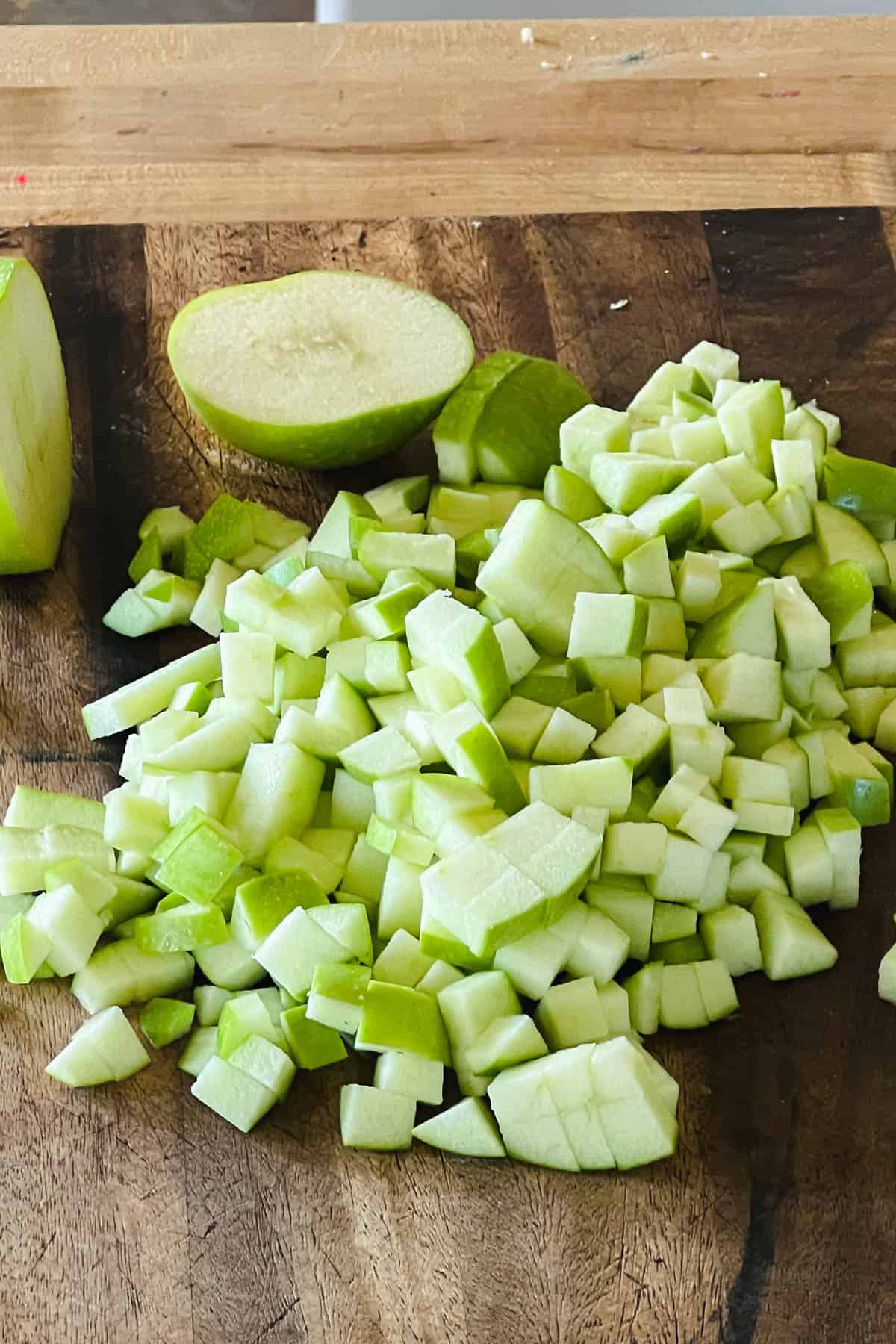
Bread crumbs
You can use panko or regular bread crumbs for this recipe. See the Frequently Asked Question section, below, for the difference between the two.
Ground cinnamon and ground cardamom
These two ingredients provide the apple strudels with a warm, spiced flavor. If you don't have cardamom on hand, then you can substitute ginger or apple pie spice.
Golden raisins
Substitute dark raisins, dried cranberries, dried cherries, dried figs or chopped dried apricots.
Hazelnuts
If you don't like hazelnuts or if you don't have them on hand, then substitute walnuts, pecans, almonds, or even chestnuts. Alternatively, you can omit the nuts altogether.
Phyllo dough
The phyllo sheets that I used for this recipe were about 14 by 9 inches (35 by 23 cm.) You can work with larger or smaller sizes, but alter the amount of filling and baking time accordingly.

Special equipment
Damp tea towel / tea towel
Layer a damp tea towel and a dry tea towel over the stack of phyllo dough while you are working to prevent dry, brittle phyllo that is hard to work with.
Would you like to save this?
Pastry brush
A pastry brush comes in handy to distribute the butter evenly over the phyllo. If you don't have a brush, then spread the butter with the back of a small spoon.
Baking sheet lined with parchment
Line the baking sheet with parchment so that the baked strudels don't stick to the pan. If you don't have parchment, then spray foil with nonstick spray as a substitute.
Step by step photos and instructions
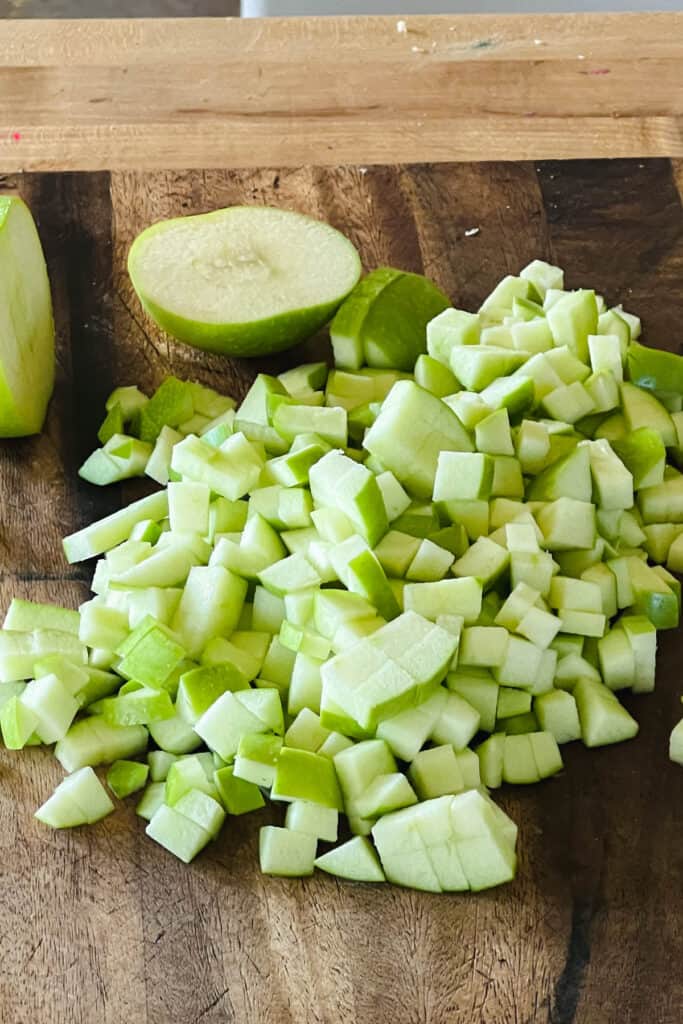
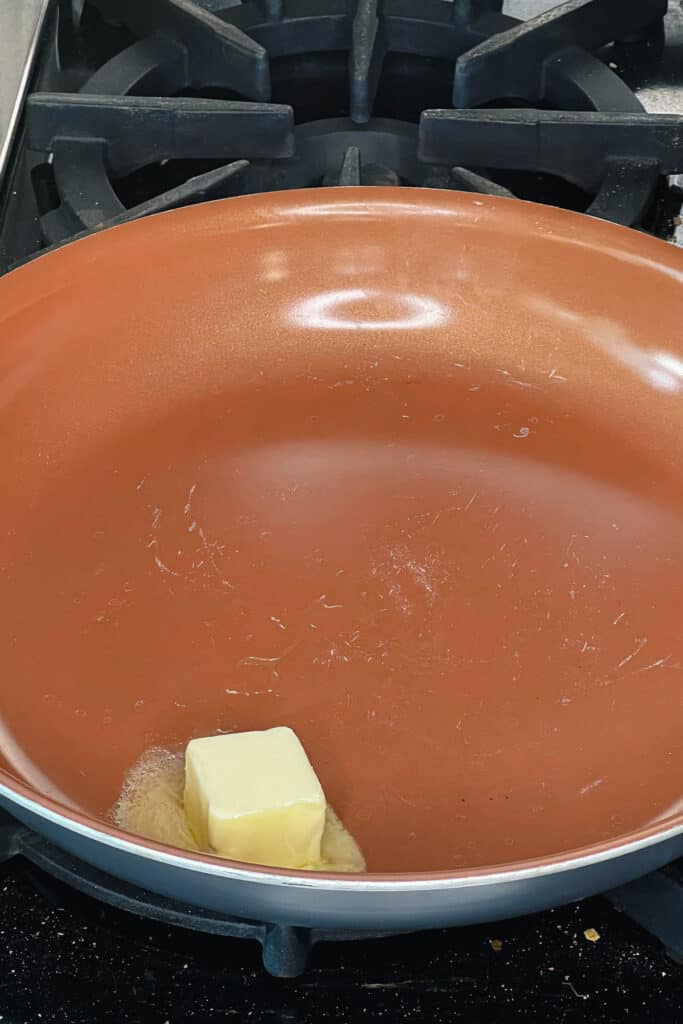
Apple strudel filling
- Preheat oven to 350 °F (180℃.) Line a large baking sheet with parchment paper.
- In a large skillet over medium-high heat, melt the butter.
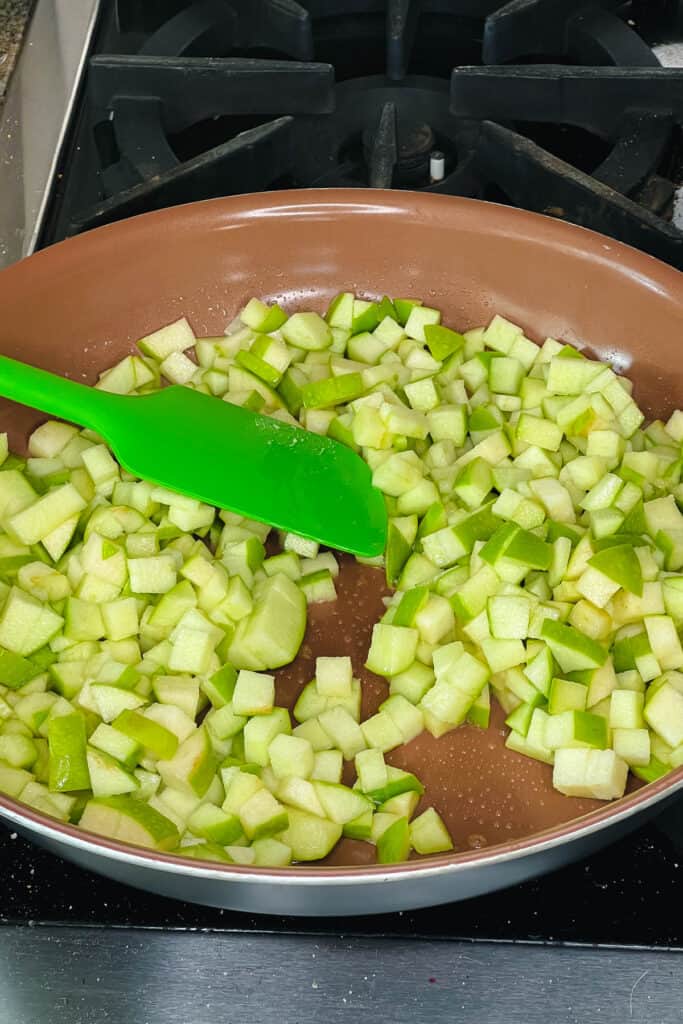
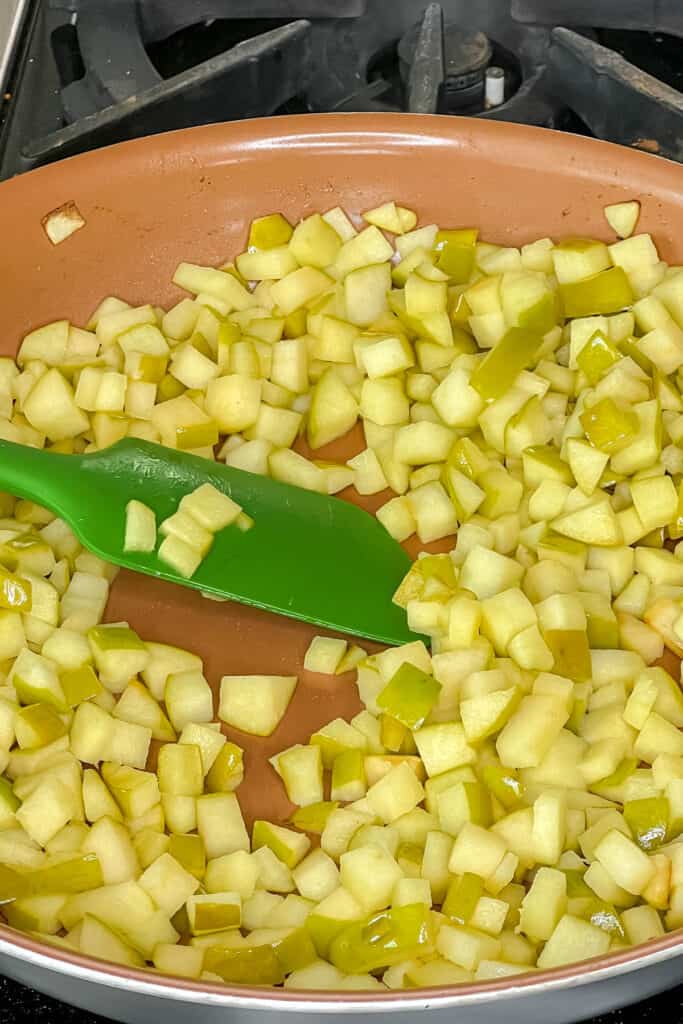
3. Add apples and lemon juice; sauté until softened, 4 to 5 minutes.
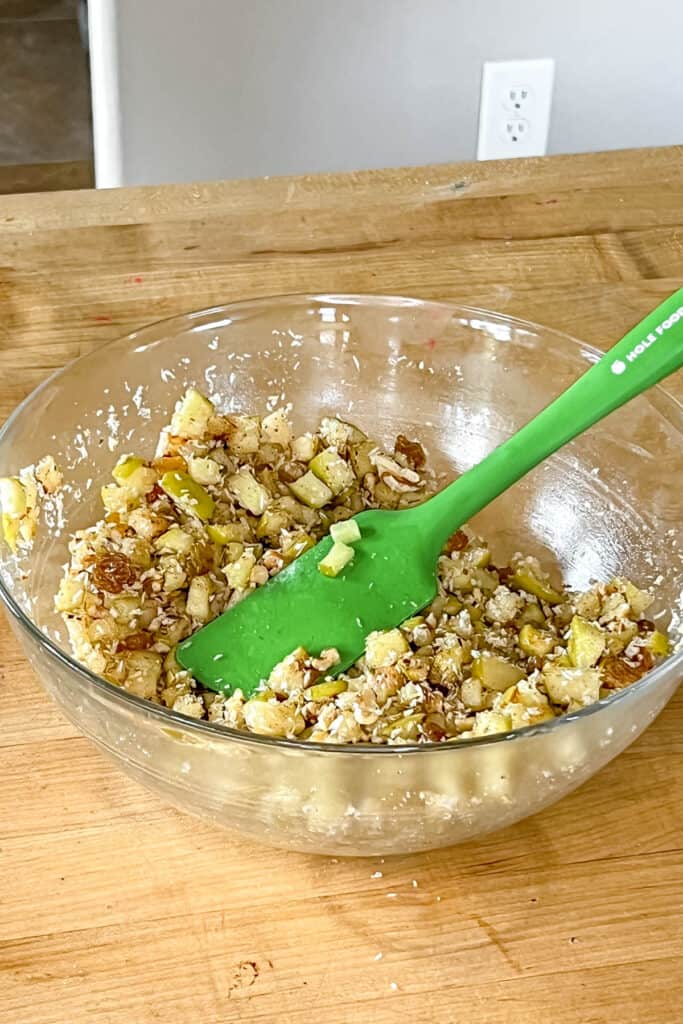
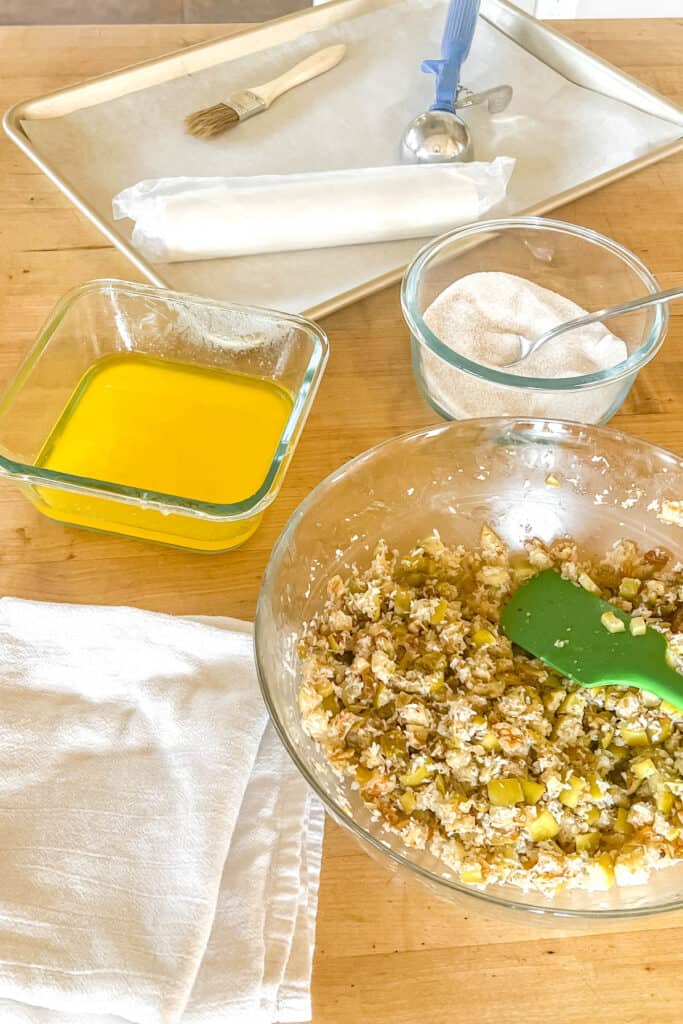
4. Transfer apples to a large bowl, and then add bread crumbs, sugar, cinnamon, cardamom, salt, raisins and hazelnuts. Stir to blend, then set aside to cool.
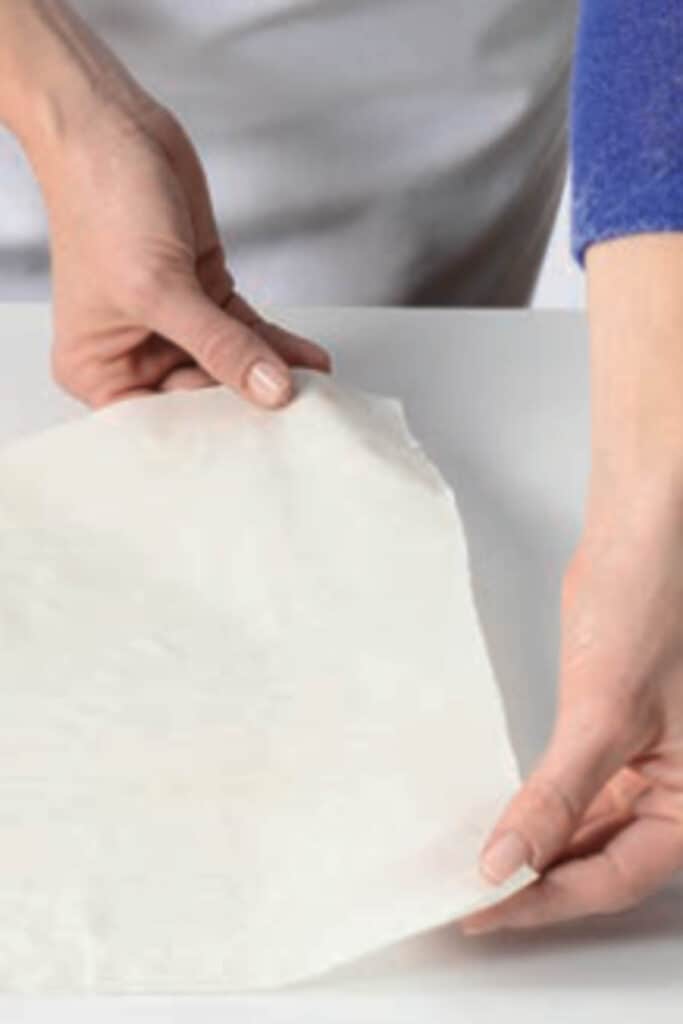
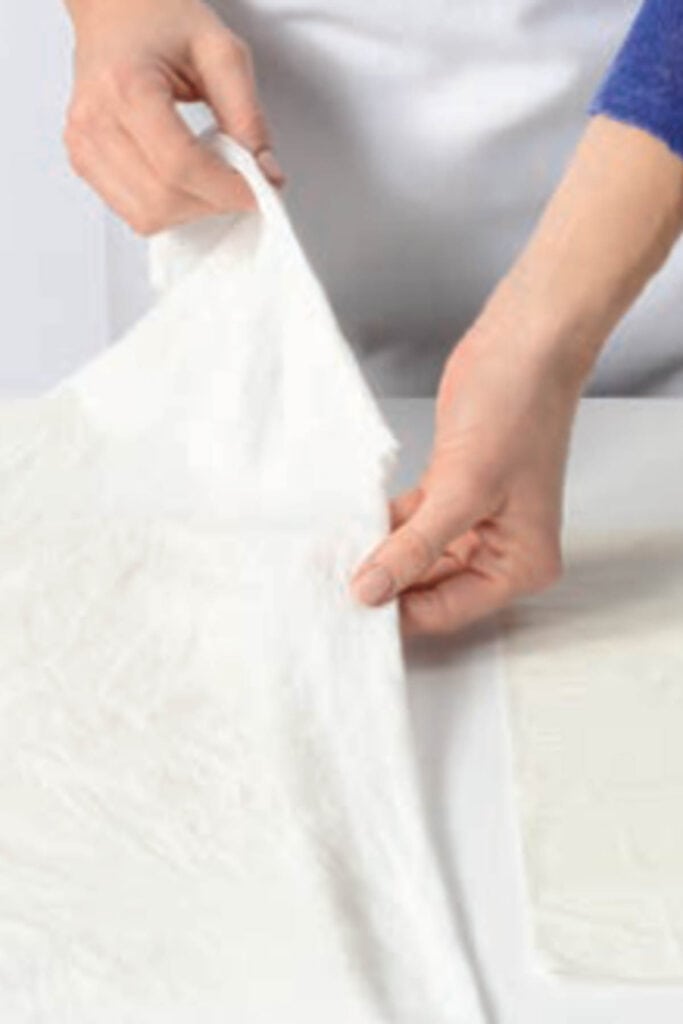
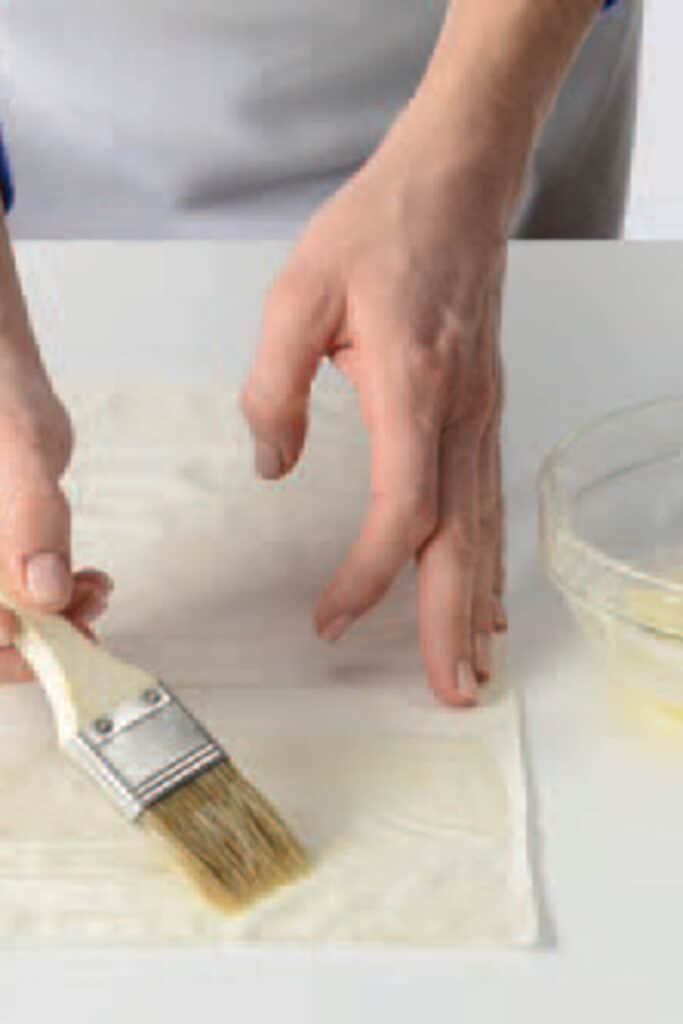
Apple strudel assembly
- In a small bowl, mix sugar with cinnamon and salt.
- Place one sheet of phyllo on a clean work surface, short side facing you. Cover remaining sheets with a damp towel to prevent drying out.) Working quickly, brush the sheet with melted butter.

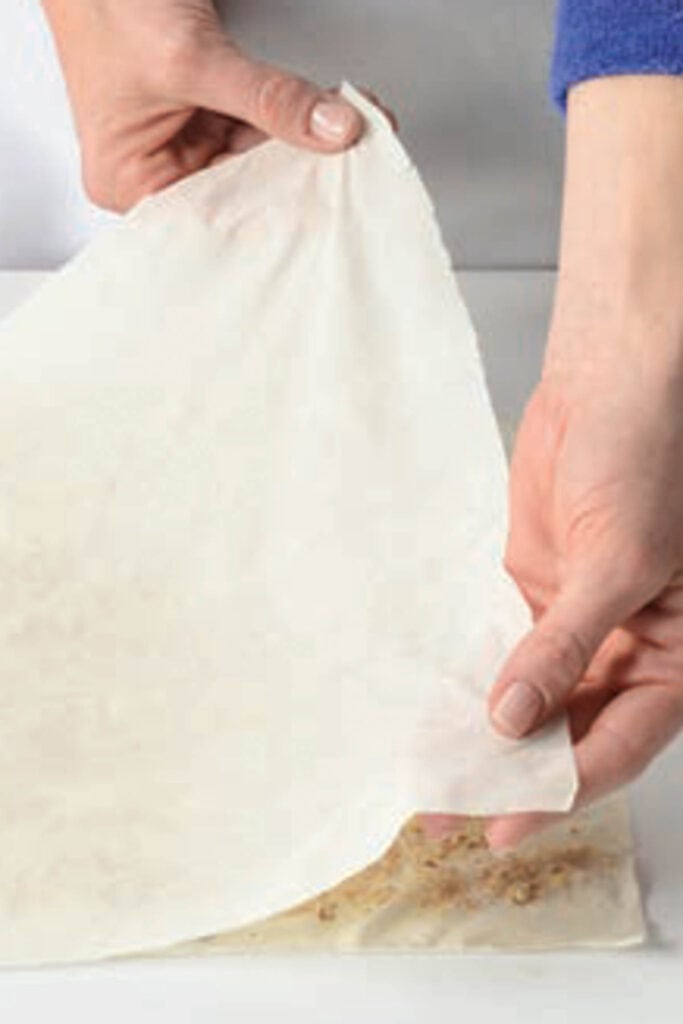
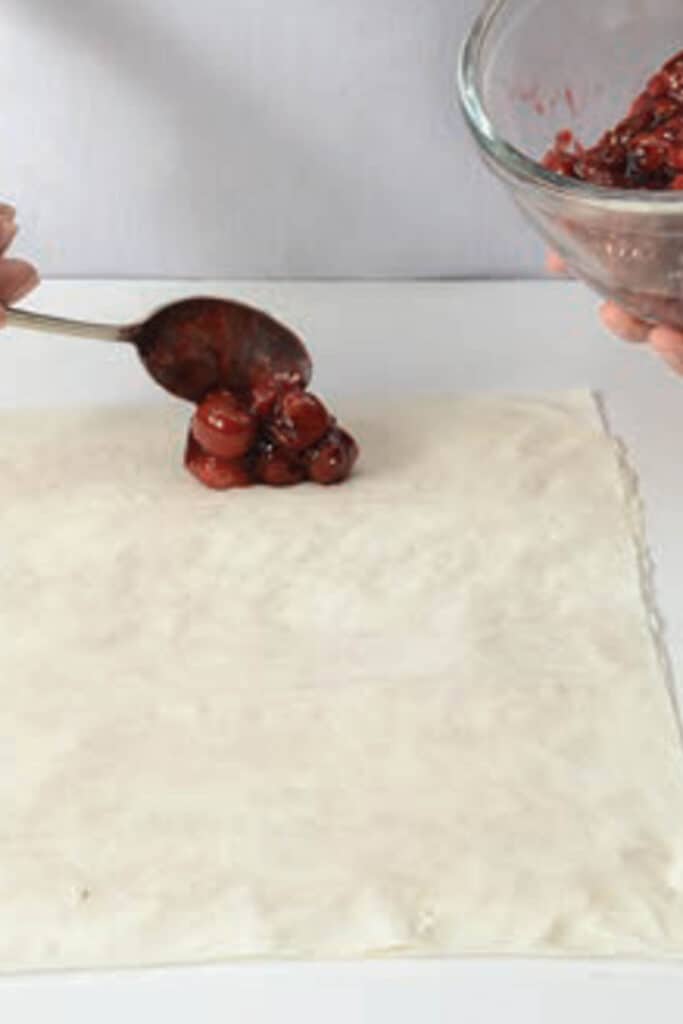
3. Sprinkle butter with cinnamon sugar, then top with a second sheet of phyllo.
4. Place ¼ cup (60 ml) apple filling about 1 inch (2.5 cm) from the bottom edge of the phyllo, leaving 3 inch (7.5 cm) borders on each side and about 10 inches (25 cm) at the top. Note: The photo above shows a cherry filling (not apple filling) from my cookbook, but you use the same technique.
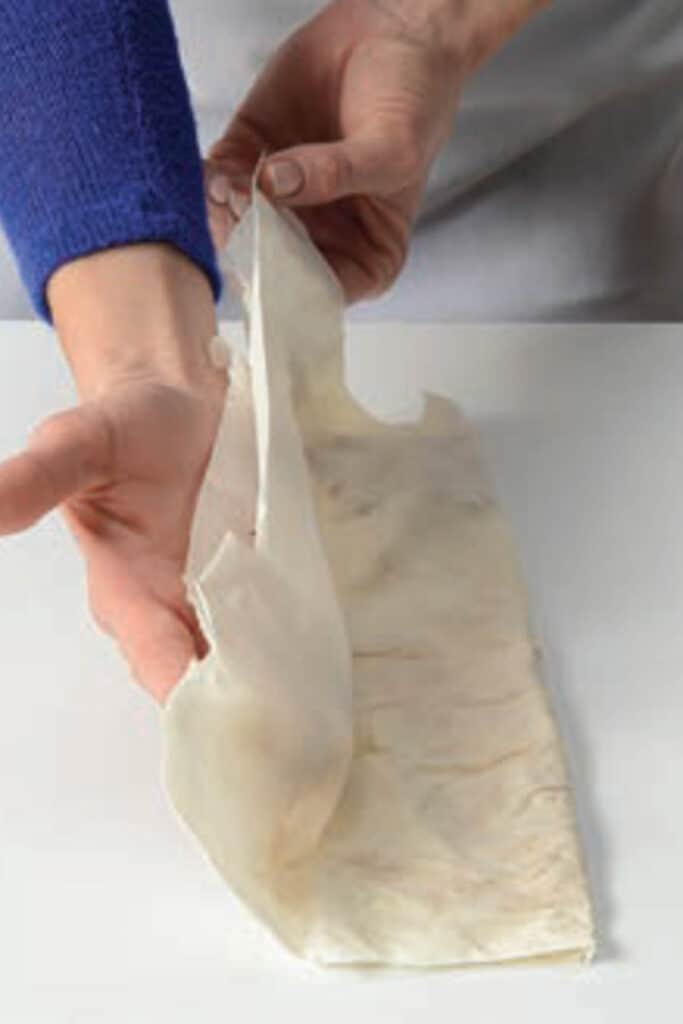
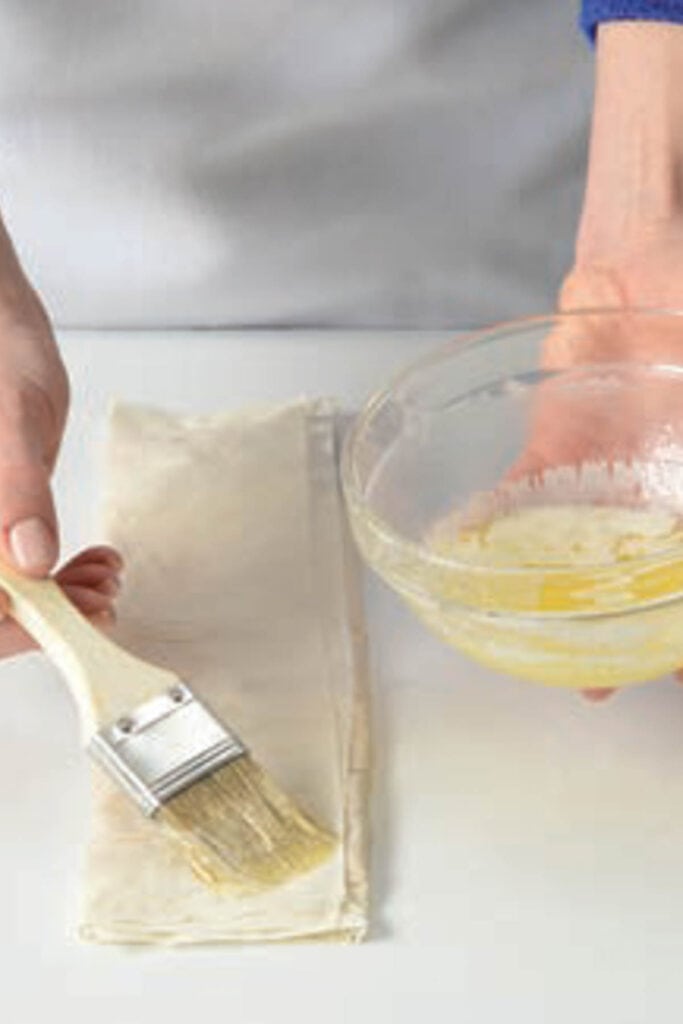
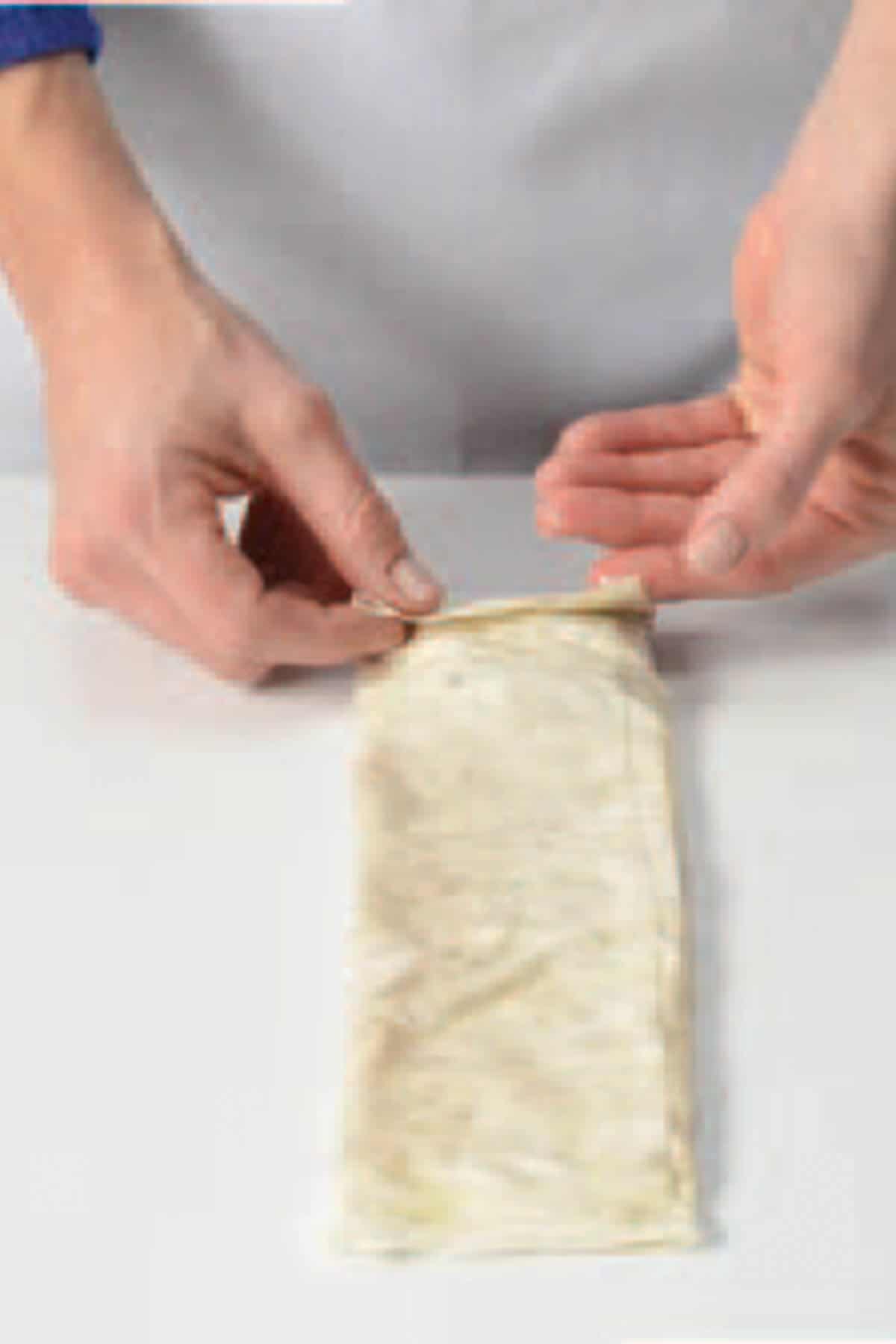
5. Carefully fold both long sides over filling so they overlap completely, covering filling. You will now have a 3 inch (7.5 cm) by 14 inch (35 cm) rectangle.
6. Brush top surface of rectangle with more butter and then sprinkle with more cinnamon sugar.
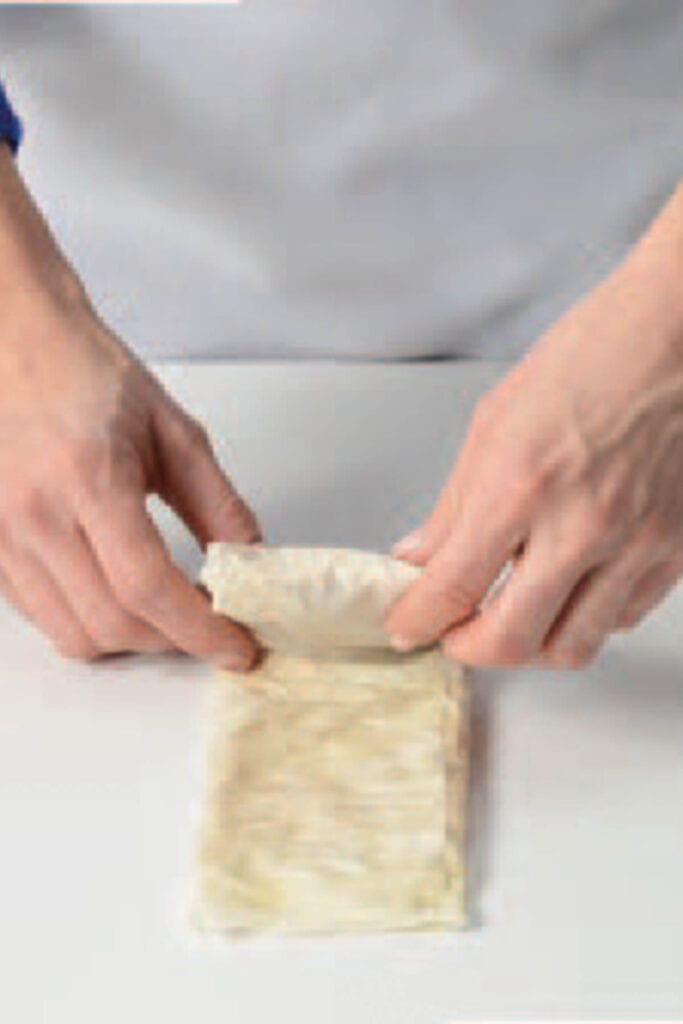
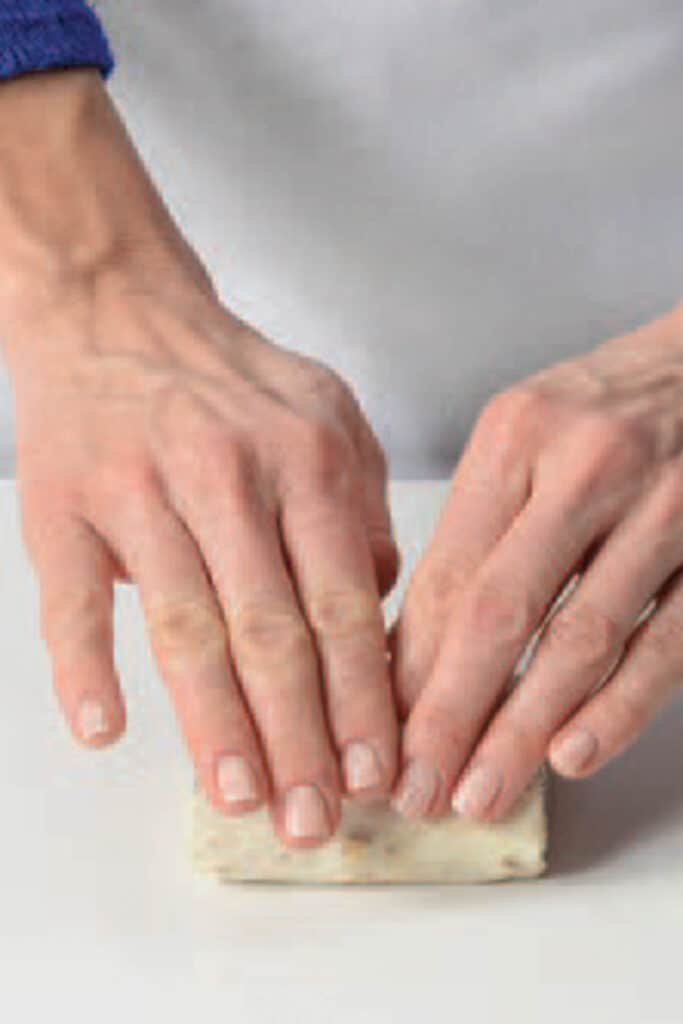

7. Fold up the 1 inch (2.5 cm) bottom edge to form a little packet for the filling. Then fold packet over and over until you reach the end of the phyllo. Press the end to seal.
8. Transfer packet to prepared baking sheet. Place it seam side down. Brush top with butter and then sprinkle with cinnamon sugar. Repeat with remaining phyllo sheets and filling, making 12 packets in total.
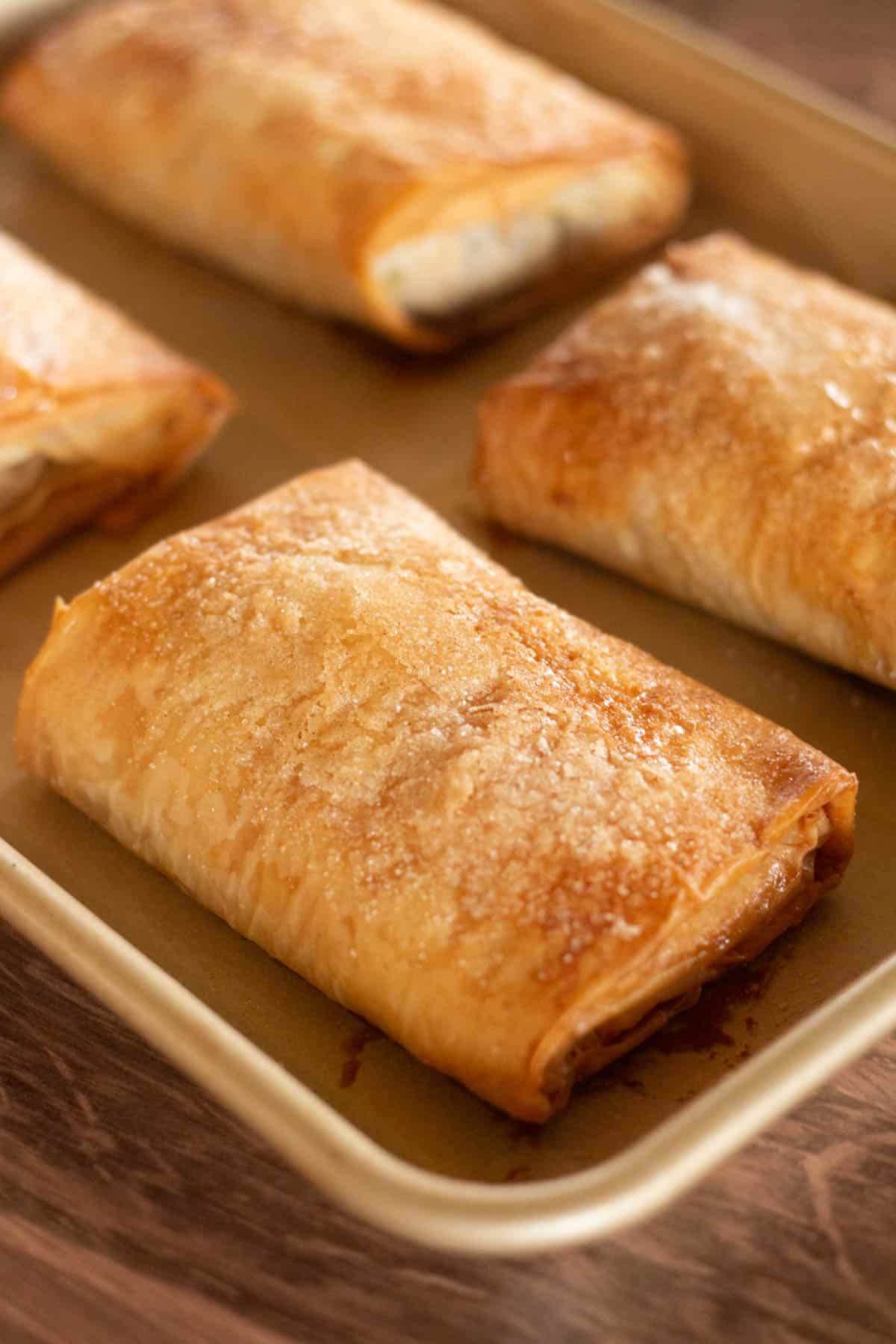
9. Bake in center of preheated oven for 25 to 30 minutes, until phyllo is deep golden brown and crisp. Cool slightly, then serve warm or at room temperature with my vanilla creme anglaise sauce or ice cream.
Frequently asked questions
Phyllo dough is delicate and dries quickly, so it is important to prepare your filling before you unwrap it. While you work with the individual pieces, cover the remaining pieces in the stack with a dry tea towel underneath a wet tea towel. This creates enough moisture to keep the sheets from drying and becoming brittle.
After baking, let your phyllo pastries cool on a wire rack rather than on a flat surface. This allows air t circulate and prevents condensation from forming underneath, which can make the bottoms soggy.
Yes! Once filled and shaped, the unbaked strudels can be frozen for up to two weeks. Place them in one layer on a baking sheet or in anzip top bag. Cover tightly with plastic wrap or seal the bag and freeze. Bake the individual strudels directly from the freezer on a lined baking sheet until golden brown and flaky.
Panko breadcrumbs are a Japanese breadcrumb with a light texture, and are often preferred over traditional breadcrumbs in recipes where a crunchy texture is desired. Here's how they are typically made:
Bread Selection: Typically, fresh white bread with the crusts removed is used.
Slicing: The selected bread is evenly sliced into thick sliced..
Drying: Unlike traditional breadcrumbs, where the bread is toasted, panko breadcrumbs are made by drying the bread without toasting it. This process removes moisture from the bread without browning it.
Grinding: The slices are then ground into coarse crumbs using a coarse grater or a special machine designed for making panko. The result is larger, irregularly shaped crumbs, which give panko its characteristic texture.
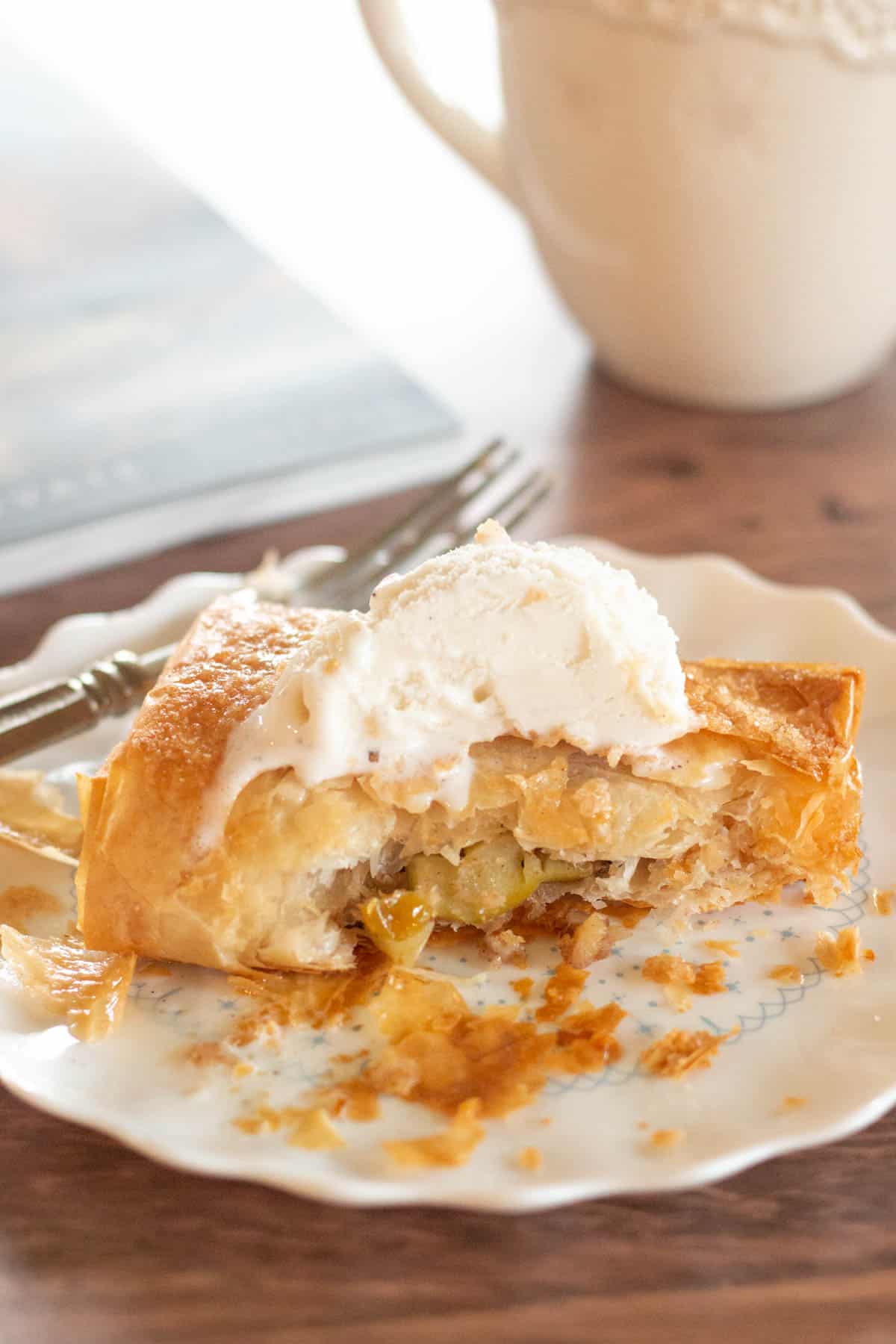
You know what they say: An apple a day! Here are some more of my favorite recipes featuring apples
- The BEST Spinach Salad with Maple Dijon Dressing
- Caramelized Apple Cupcake with Spiced Cider Buttercream
- Spiced Apple Pancakes with Cider Syrup
Tried this recipe and loved it? Take a photo and tag me on Instagram or give it a review!
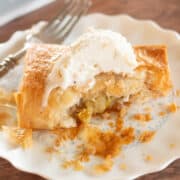
Mini Apple Strudels (Apfelstrudels)
Equipment
- Damp kitchen towel
- Baking sheet lined with parchment
- pastry brush
Ingredients
Strudel filling
- 2 tablespoon unsalted butter
- 3 large tart apples, cored and chopped (see Notes)
- 1 tablespoon lemon juice
- ½ cup unseasoned panko or regular breadcrumbs
- ¼ cup granulated sugar
- ½ teaspoon ground cinnamon
- ½ teaspoon ground cardamom
- ¼ teaspoon kosher salt
- ¼ cup golden raisins
- ⅔ cup chopped, lightly toasted hazelnuts
Strudel assembly
- 24 sheets phyllo pastry, thawed (look for 14 X 9 inch sizes, or close)
- ¾ cup unsalted butter, melted
- ¾ cup granulated sugar
- 1 teaspoon ground cinnamon
- ⅙ teaspoon kosher salt
Would you like to save this?
Instructions
- Preheat oven to 350 °F (180℃.) Line a large baking sheet with parchment paper.
Strudel filling
- In a large skillet over medium-high heat, melt butter. Add apples and lemon juice; sauté until softened, 4 to 5 minutes.
- Transfer apples to a large bowl. Add bread crumbs, sugar, cinnamon, cardamom, salt, raisins and hazelnuts; stir to blend. Set aside to cool.
Strudel assembly (see Step by Step Photos, above)
- In a small bowl, mix sugar with cinnamon and salt.
- Place one sheet of phyllo on a clean work surface, short side facing you. Cover remaining sheets with a damp towel to prevent drying out.) Working quickly, brush sheet with melted butter and sprinkle with cinnamon sugar.
- Top with a second sheet of phyllo.
- Place ¼ cup (60 ml) apple filling about 1 inch (2.5 cm) from the bottom edge of the phyllo, leaving 3 inch (7.5 cm) borders on each side and about 10 inches (25 cm) at the top.
- Carefully fold both long sides over filling so they overlap completely, covering filling. You will now have a 3 inch (7.5 cm) by 14 inch (35 cm) rectangle.
- Brush top surface of rectangle with more butter and sprinkle with more cinnamon sugar.
- Fold up the 1 inch (2.5 cm) bottom edge to form a little packet for the filling. Then fold packet over and over until you've reached the end of the phyllo. Press the end to seal.
- Transfer packet to prepared baking sheet, seam side down. Brush top with butter and sprinkle with cinnamon sugar. Repeat with remaining phyllo sheets and filling, making 12 packets in total.
- Bake in center of preheated oven for 25 to 30 minutes, until phyllo is deep golden brown and crisp. Cool slightly, then serve warm or at room temperature.
Video
Notes
- I've found that green Granny Smith apples work well with this recipe, as their tart flavor contrasts with the sweet cinnamon sugar and the buttery phyllo.
- When working with thawed phyllo dough, be sure to keep it covered with a damp clean tea towel. Until you brush it with the melted butter, it will dry out quickly when exposed to air.
- Creme anglaise, which I suggest serving with the strudel as an alternative to ice cream, is a light pouring custard made of sugar, egg yolks, milk or cream, and vanilla. There are several good recipes for this online.
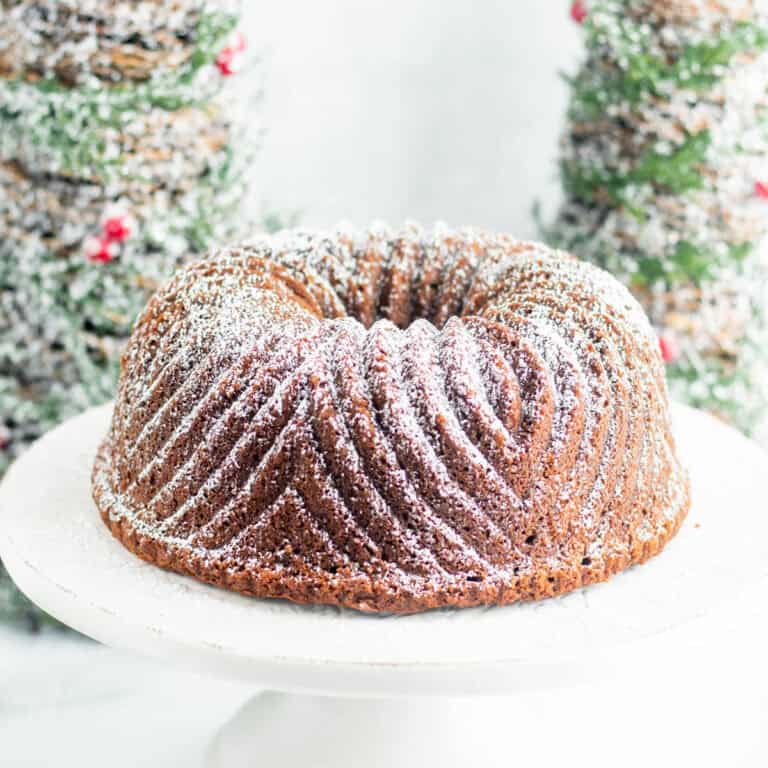
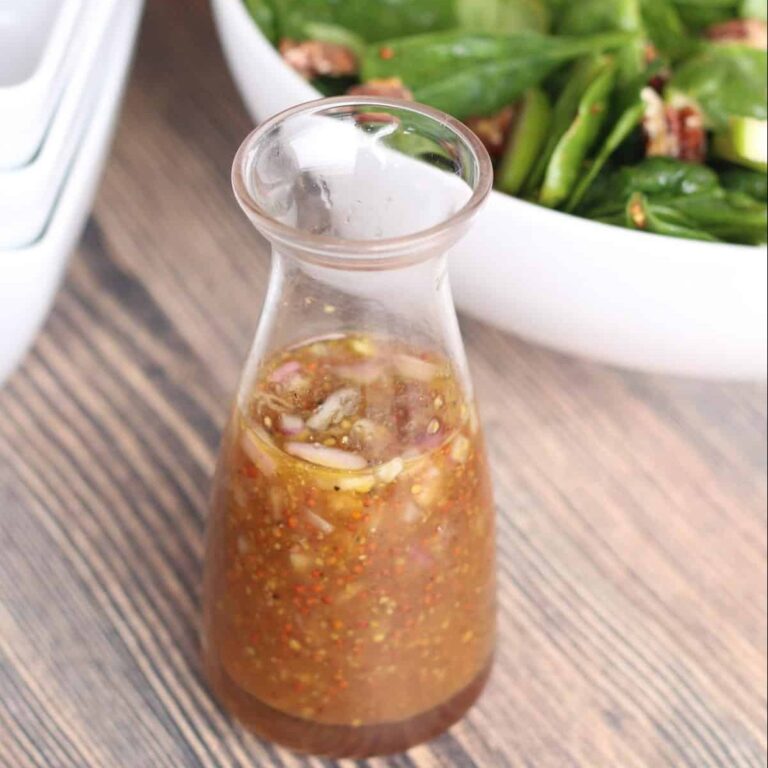
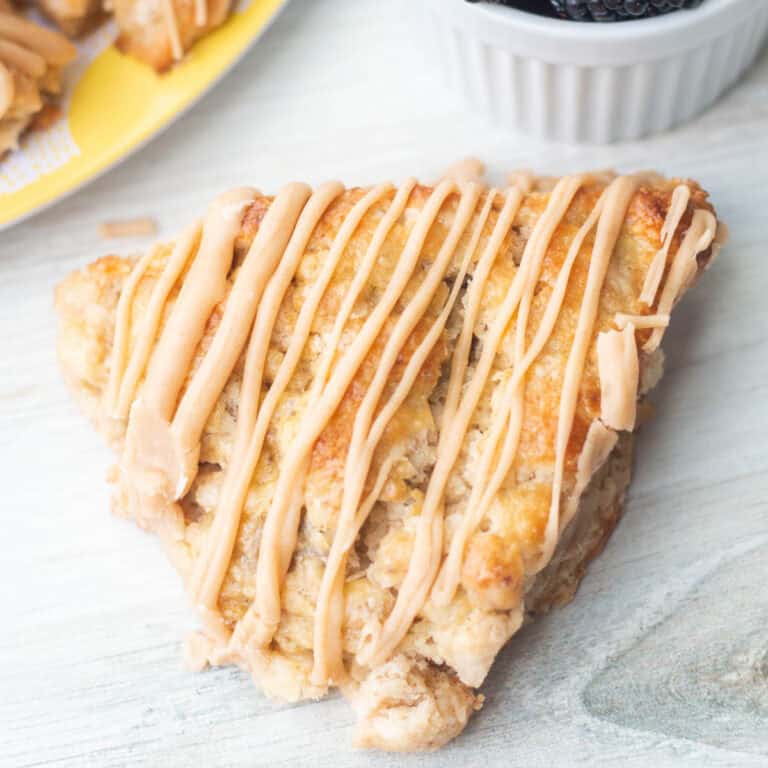
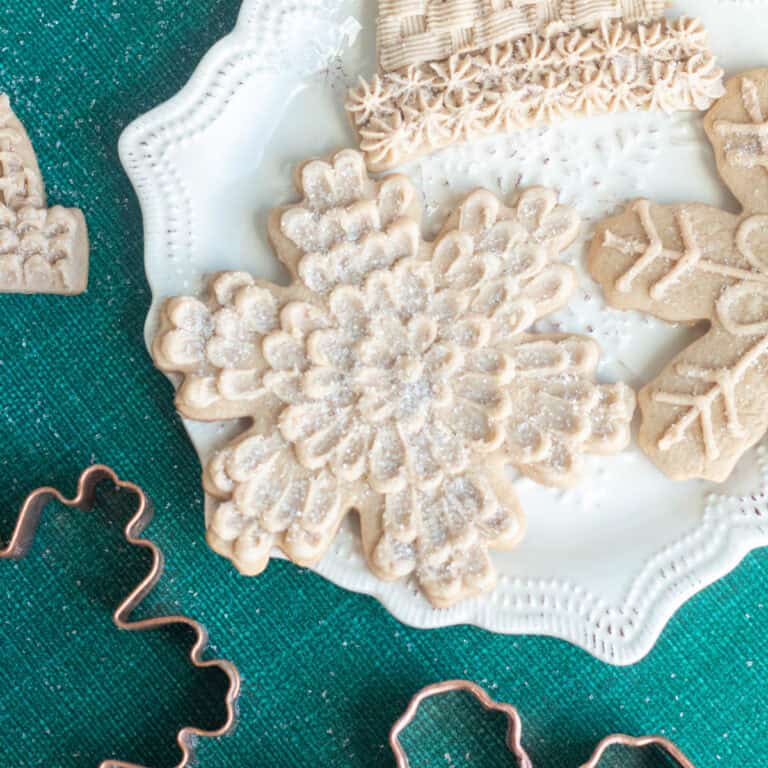
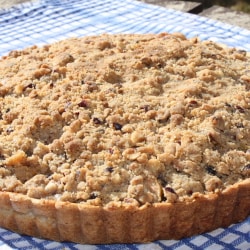
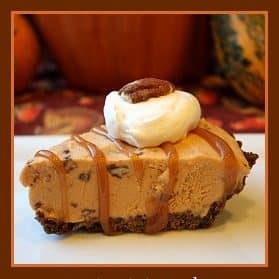
These were a real hit at Thanksgiving! It was my first time working with phyllo so I was a little intimidated going into it, but this recipe explained the process well and I got the hang of it as I went along. I'll be making more for Christmas! I loved how buttery and flakey these are. I served them with homemade honey-vanilla whipped cream.
Thank you so much, Maddy! I'm so glad the directions made everything easy for you. They are my most requested holiday dessert from my friends...will be making them again for New Year's Eve!!
Thank YOU! I also forgot to mention that I did the freezing method you suggested in the notes because I knew I wouldn't have time to make these from start to finish the morning of Thanksgiving. I was worried they would be soggy or not bake evenly, but it worked great! I'll be doing that again for Christmas. Hmm... maybe I'll even make a double batch and bring some to the in-laws for New Years. Thanks again. By the way, I print out any online recipes that I have tried and are proven winners, so I never lose them even if the site no longer exists in 20 years lol. This is def getting a printout!